Unit 3.1 Bacterial Genetics
1/85
There's no tags or description
Looks like no tags are added yet.
Name | Mastery | Learn | Test | Matching | Spaced |
|---|
No study sessions yet.
86 Terms
cellular functions of proteins
C, H, O, N, S, amino acids (20), enzymes, transporters, produces and kills bacteria, contraction, movement of microbial and cells, hormones, antibodies
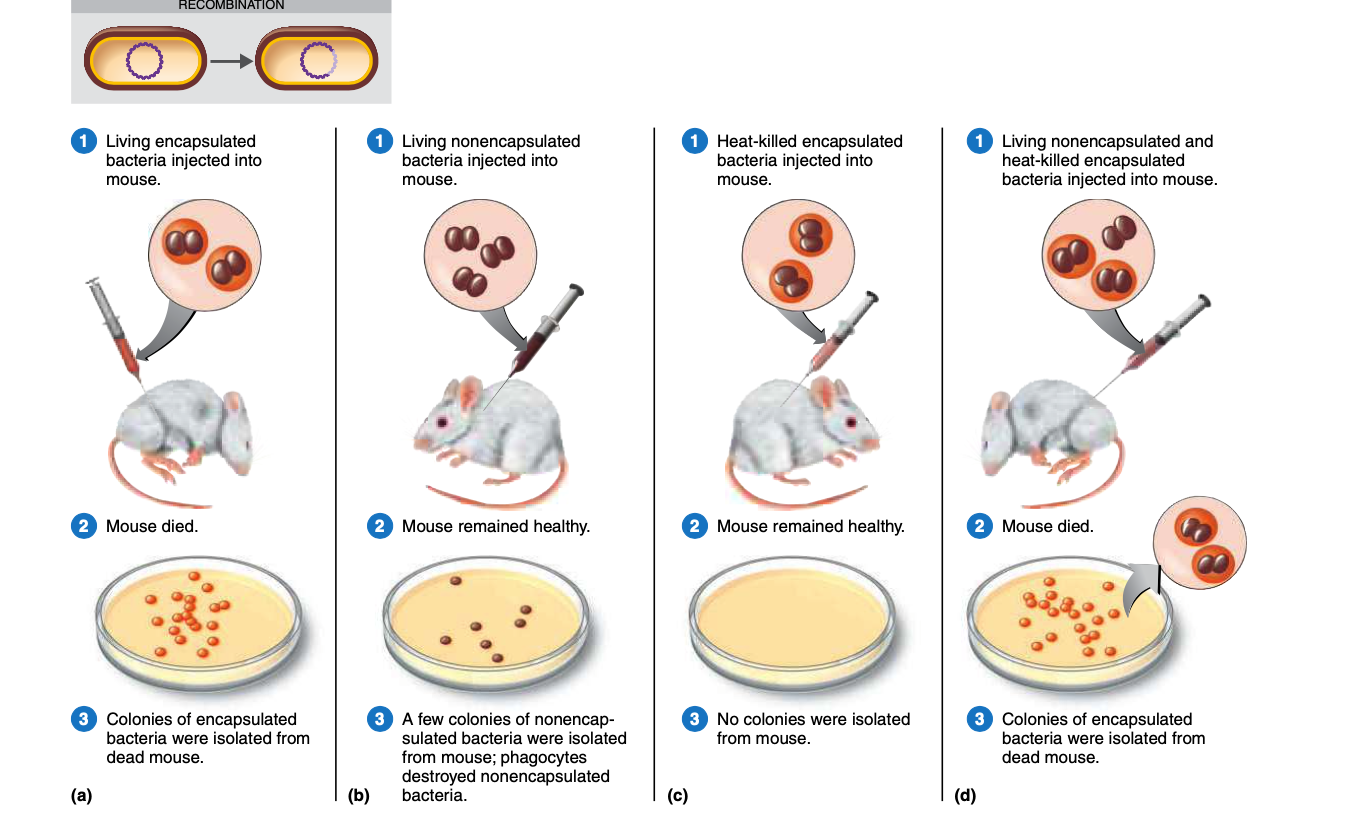
pyrimidines
T, C, U, single ring nucleotide
purines
A, G, double ringed nucleotide
nucleotides
nitrogen containing base, pentose sugar, phosphate group,
adenine (A)
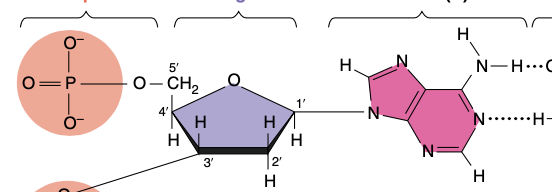
guanine (G)
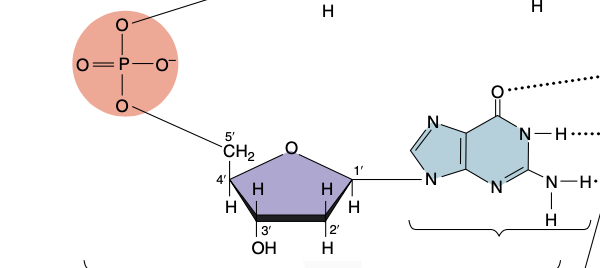
cytosine (C)

thymine (T)

uracil (U)
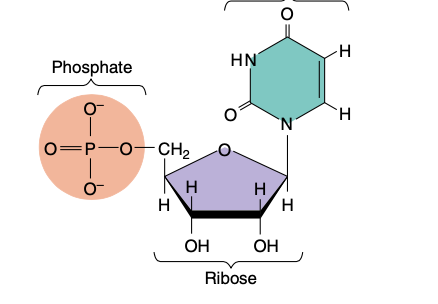
antiparallel structure of DNA
paired DNA oriented in opposite directions
DNA replication in eukaryotic cells
supercoiling is relaxed by topoisomerase or gyrase, the dna strands are unwound by helicase and separated from each other, free nucleotides in the cytoplasm match up with the exposed bases of the exposed parent DNA. the nucleotides are then joined by dna polymerase (adds to 3’ end) then replication fork moves further . newly synthesized strand is semi conservative since new dss dna contained one parental strand
process of DNA replication in prokaryotic cells
bidirectionally around chromosomes, two replication forks that move in opposite directions away from origin of replication, since closed loop the replication fork eventually meet when replication is complete. the two loops are then speared by topoisomerase.
gene
determine all hereditary traits, control all the activities that take place within cells, sequence of nucleotide, code for functional products
translation
converting nucleic acids to proteins
transcription in prokaryotes
synthesis of a complementary strand of RNA from a DNA template, RNA poly. binds to promoter and dna unwinds at the beginning of a gene —> ran is synthesized by complementary base pairings of free nucleotides with he nucleotide bases on the template strand of DNA —> site of synthesis moves along dna, dna that has been transcribe rewinds —> transcription reaches terminator —> complete RNA strand RNA and RNA poly are released and DNA helix reforms
how is gene expression regulated by repression (repressive operons) (trp operon)
structural genes are transcribed until they are turned off. genes for the enzymes involved in the synthesis of tryptophan are regulated in this manner. genes are transcribed and translated leading to tryptophan synthesis, when present tryptophan acts as an corepressor and binds to the repressor protein so the protein can bind to the operator and stop further tryptophan production
how is gene expression regulated by induction
absence of lactose repressor binds to the operator site thus preventing transcription, in presence the repressor binds to a metabolite of lactose instead to the operator and lactose digested enzymes are transcribed
trp operons
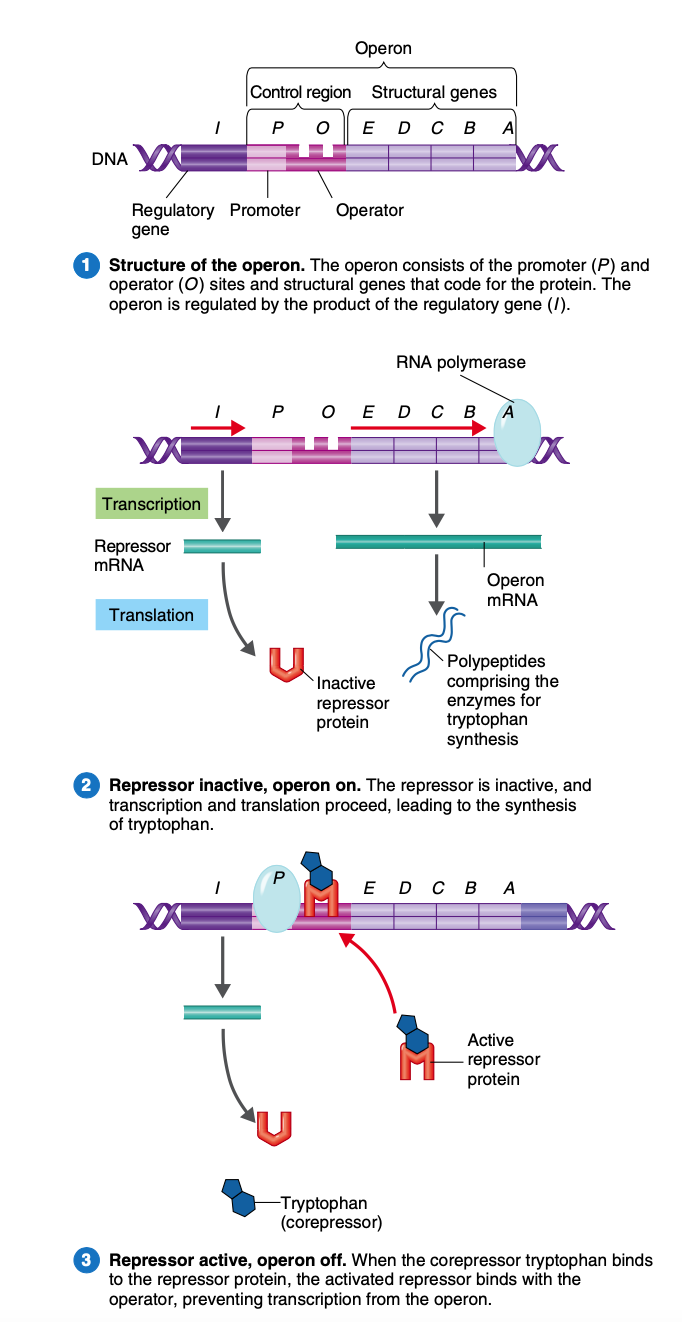
lac operons
needed to metabolize lactose, inducible operon
central dogma chain of events
dna —> mrna —> protein —> function
mutations
base substitution and frameshift, permanent change in base sequence of DNA,
base substitution/ point mutation
a single DNA pair is altered, incorrect base of Mrna translated into protein incorrect amino acid
frameshift mutation
dna pairs are added or removed from the sequence causing a short in the sequencing reading, shift translational reading frame, trna during translation
Ames test
uses bacteria as a carcinogen (substance that cause cancer) indicator, based on observation that exposure of mutant bacteria to mutagenic substances may cause new mutations that reverse the effect (change in phenotype) of the original mutation (reversions), reversion of histamine auxotrophs
transformation
genes transferred from one bacterium to another as naked DNA in solution
conjugation
mechanism by which genetic material is transferred from one bacterium to another mediated by conjugative plasmid, differed from transformation because requires cell to cell contact & cells must be opposite mating type (donor cells must carry plasmid and recipient cells usually do not. used to map location of genes in bacterial chromosomes
transduction
mechanism of genetic transfer between bacteria, bacterial DNA is transferred from a donor cell to bacteriophage (a recipient cell inside a virus that infects bacteria)
factors that contribute to rapid evolution of microorganisms
mutation, horizontal gene transfer, generation time, population size
horizontal gene transfer
bacteria passing genes laterally to other microbes in the same generation
DNA ligase
makes covalent bonds to join DNA strands, Okazaki fragments, and new segments in excision repair
DNA polymerase
synthesize DNA, proofread and facilitate repair DNA, adds nucleotides to 3’ end only this makes two new strands of DNA grow in diff directions
helicase
unwinds dss DNA
Okazaki fragment
fragments of about 1000 nucleotides that make lagging strand
replication fork
unwound part of parental DNA and the point at which replication occurs
primase
an RNA polymerase that makes RNA primers from a DNA template
leading strand
synthesized continuously from 5’→3’
lagging strand
new DNA synthesized discontinuously in fragments (Okazaki fragments), joined later by ligase to make continuous strand
origin of replication
where dna replication starts
topoisomerase/ gyrase
relaxes supercoiling ahead of the replication fork, separates DNA circle at the end of DNA replication
DNA gyrase
relaxes supercoiling ahead of the replication fork
complementary strand of dna
because of specific base pairing one strand determines the sequence of this one, runs 5’ to 3’
peptide bond
bonds between amino acids, one water molecule is released when this is formed by dehydration synthesis
genome
genetic information in a cell
promotor
the site where the RNA polymerase binds to DNA, start of transcription
F+ cells
donors carrying f factors (fertility factor)
F- cells
transfer plasmid recipients
operon
group of genes that are transcribed together and controlled by one promoter
Hfr cell
high frequency of recombination, in some cells carry F factors the factor integrates into the chromosome converting the F+ cells
β-galactosidase
involved in transport of lactose into the cell, encoded by lacZ
permease
aka transport proteins, mem bound in facilitated diffusion to transport specific proteins across membrane, lac one helps transport lactose into the cell and the lacY gene encodes for it
transacetylase
metabolizes certain disaccharides other than lactose
plasmid
genetic elements hat exist outside of chromosomes, occurs in prokaryotes and eukaryotes.
mutagen
agents in environment, chemicals or radiation, that directly or indirectly bring about mutations
R plasmid
resistance factors, have significant medical imporance, resistant to a lot of antibiotic, acquired resistance through spread of genes from one organism to another, plasmids that mediated this transfer is called this.
bacteriophage
recipient cell inside a virus that infects bacteria
sex pilus
one or two per cell, involved in motility and dna transfer from one cell to another. this in the F+ cell connects to the receptors on the surface of another bacterium of its own species or a different species. they make physical contact and DNA from F+ cell is transferred to the other cell
F plasmid
conjugative plasmid, carries genes for sex pili and for transfer of the plasmid to another cell
Frederick Griffith
working with two strands of streptococcus pneumonia, on virulent with capsule prevents phagocytosis, bacteria grows and cause pneumonia. the other avirulent lacks capsule and doesn’t cause disease. studied wheather injections heat killed bacteria of encapsulated strain could be use to vaccinate mice against pneumonia. injections of living encapsulated killed mice injections of non incapsulated or dead encapsulated didn’t kill mice. but live non capsuled mixed with dead encapsulated killed many mice,
inducer
molecule that triggers expression of a gene
repressor
molecule that inhibits expression in two or more genes
polyribosome
many ribosomes in a single bacterial gene
DNA
double helix, most viruses are double stranded helix but some have single stranded (parvoviruses), deoxyribose sugar, A, T, G, C, contains genes (determine all hereditary traits)
RNA
single stranded in cells and most viruses but double stranded in some viruses (reoviruses), ribose sugar, C, G, A, U, protein synthesis
genotype
an organisms genetic makeup, all its dna, codes for particular characteristics of organism and represents potential properties.
phenotype
actual expressed properties or characteristics in an organism
chromosome
structures containing DNA that physically carry hereditary information, contains genes, typically single circular in bacteria
haploid
one set of chromosomes (n)
diploid
two sets of chromosomes (2n)
messenger rna
carries the coded information for making specific proteins from DNA to ribosomes where proteins are synthesized, acts as an intermediate between the permanent storage form of DNA and he process that uses the info in translation, codons. ribosomes move 5’—>3’
ribosomal rna
forms integral part of ribosomes, cellular machinery for protein synthesis
transfer RNA
reorganize the specific codons and transport the required amino acids.
auxotroph
any mutant microorganism having a nutritional requirement that is absent in the parent, ex:may lack enzymes needed o synthesize a particular amino acid and will therefore require amino acid as a growth factor in nutrient medium
prototroph
organism capable of synthesizing all its metabolites or has the same nutritional requirements as its parent or original strain
spontaneous mutation
mutations that occur spontaneously because of occasional mistakes during dna replication
induced mutaton
purposefully exposure to a carcinogens (most common UV) and genotoxins
codon
groups of three nucleotides, mRNA determines the sequence of amino acids that will be in the protein synthesized.
anticodon
in trna, sequence of 3 bases complementary to a codon so the trna can base pair with its associated codon
minus strand of DNA
3’—>5’antisense used for transcription
plus strand of DNA
5’ —> 3’, sense strand, mrna
constitutive enzyme
their products are constantly at a fixed rate
inducible enzyme
enzyme whose activity is increased as a response to a molecule
origin of transfer
specific sequencethat initiates transfer of genetic material from donor bacterium to recipient
central dogma
the sequence of nucleotides in DNA determines the sequence of amino acids in a protein, how dna is transcribed to messenger RNA to turn into protein that carry out function.
RNA polymerase
copies RNA from a DNA template
transcription in eukaryotes
takes place in nucleus, mrna must be completely synthesized and move through nuclear mem to cytoplasm before translation begins, exons (region of dna. expressed) and introns (intervening regions of DNA that do not encode protein) RNA poly synthesize mole called ran transcript that contains copies of introns and snRNPs remove introns and act as ribozymes to catalyze their own removal
methods of genetic transfer between bacteria
transformation, conjugation, transduction